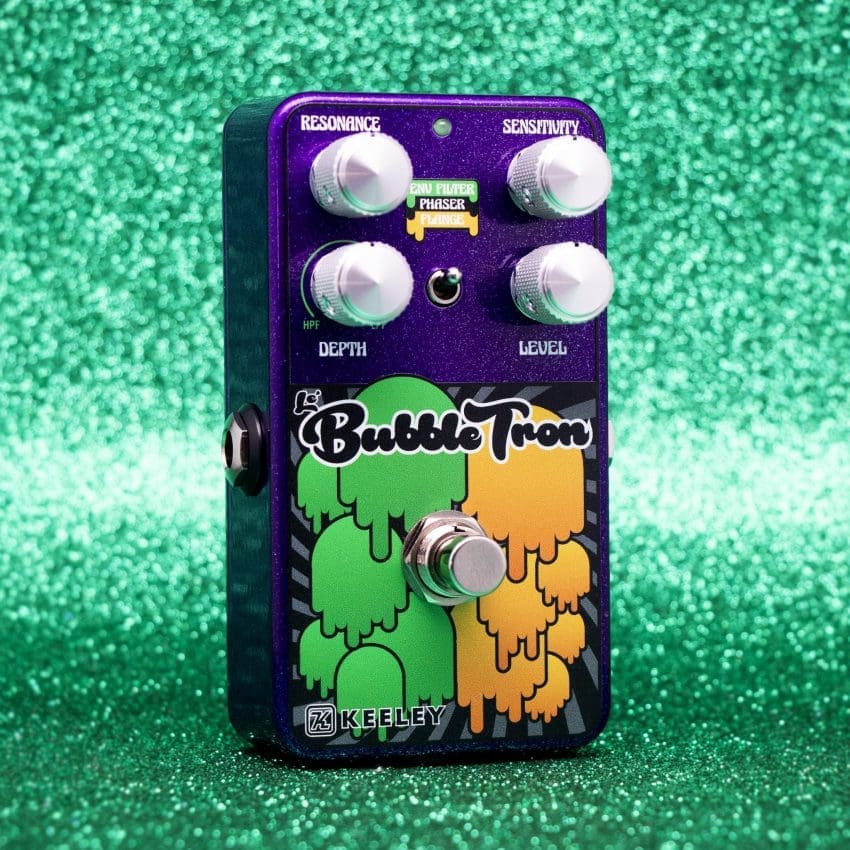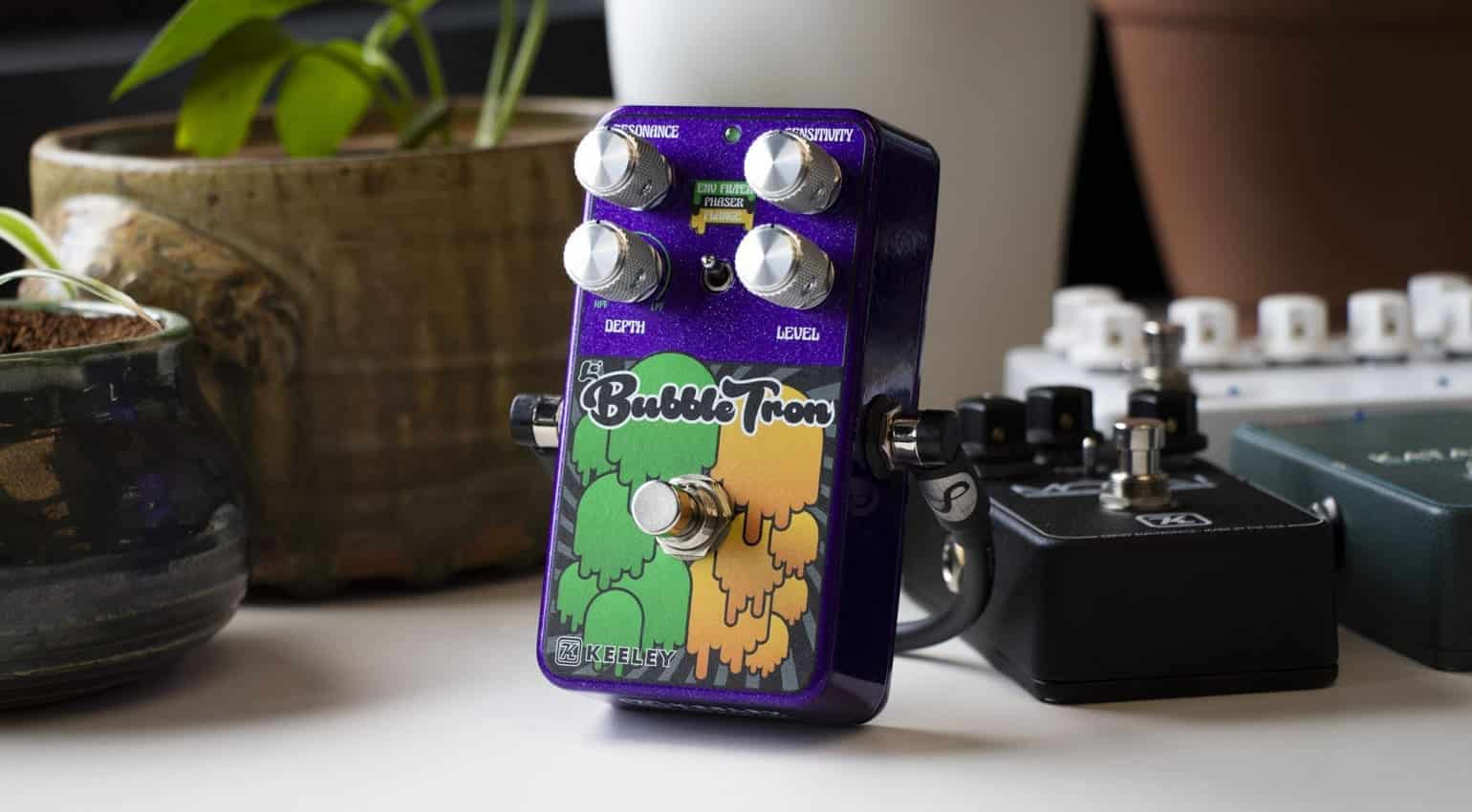The new Bubble Keeley Larry ‘Ler’ LaLonde Le Bubble Tron is the latest Artist Series Effect Pedal from the boutique pedal maker. Apparently the Primus guitarist has been using the Tron since 2016 and so they decided to rebadge a limited run in his honour!
Larry ‘Ler’ LaLonde Le Bubble Tron
I love Primus and so when I saw his new Keeley Larry ‘Ler’ LaLonde Le Bubble Tron pedal it put a huge smile on my face. I’m also a massive Frank Zappa fan, and so was well aware of this effect already. It is a vintage sounding modulation effect, that responds to your playing, which results in constantly unique and creative guitar tones. This vintage modulation/filter is super organic and very bubbly!
Artist Series Effect Pedal
You may also remember the Celisse Artist Monterey pedal, which was a re-badging of the Jimi Hendrix in a pedal effects. That was a sweet graphic update and so is this latest model. It is a limited release, so you’ll need to head over to Keely and order one soon. Or you will miss out on this sweet purple sparkle finish. I actually think this graphic is a lot nicer than the original, which you can see int he demo video below. Though whichever version you opt for, they all sound great to my ear.

What’s a Bubble Tron?
Below is the official description taken form the Keeley site for each of the effects and as you can see this is a pretty versatile effect pedal. Essentially combining an Envelope Filter, Phaser and a Flanger. You certainly get a lot of bang for your buck with this pedal.

LervelopeFilter –
The Bubble Tron’s envelope filter has a super smooth filter sound that follows your playing to give you a tonal push. The Resonance Control is your Q control, it sets the quality or resonance of the filter, it can be narrow and pointed at a certain frequency, or it can be more broad and offer a wide push of frequencies. The Depth Control gives you a range from High Pass sounds to Low Pass filter tones. The Sensitivity Control is set according to your guitar’s pickups and output strength. Dial this in as you play notes, listen for how the filter opens up based on your pick attack. This envelope filter is characterized by a very slow release time.
DynaMoPhase –
This section of the Bubble Tron is actually two phasers. One has an LFO that you set the speed of with the Rate Control (while it’s depth is dynamically controlled) and the other is a true Dynamic Phaser. It starts and stops based on your pick attack. Again, you can set the Depth and and Sensitivity of this phaser to give you a very watery sound that is all based on your guitar’s signal. You can turn off the standard phaser and just run it DynaPhase by turning the Rate Control off.
DynaFlanger –
This section of the pedal draws on inspiration from the MicMix DynaFlanger. This incredible piece of gear was used by Frank Zappa to create many of the sounds in the late 70s to mid 80s where a dynamic flanger was used in his solos. A dynamic flanger is one that starts and stops based on your pick strength or attack. The Bubble Tron uses your playing to start and stop the flanger. Most flangers have an LFO that you can hear swooshing in the background. The Bubble Tron doesn’t use a conventional oscillator and as a result you don’t hear the LFO. Many flangers offer only positive or negative feedback. This one allows you to try either with the FDBK Control. The negative feedback sounds more vocal like and hollow to my ears while the positive feedback is more conventional and has a thicker, smoother sound. The Sensitivity Control allows you to set how delicately you want to play and have the flanger go fully crazy on you. The Depth Control is just that, how deep you want the flanging to be.
RRP – USD 229
Video


